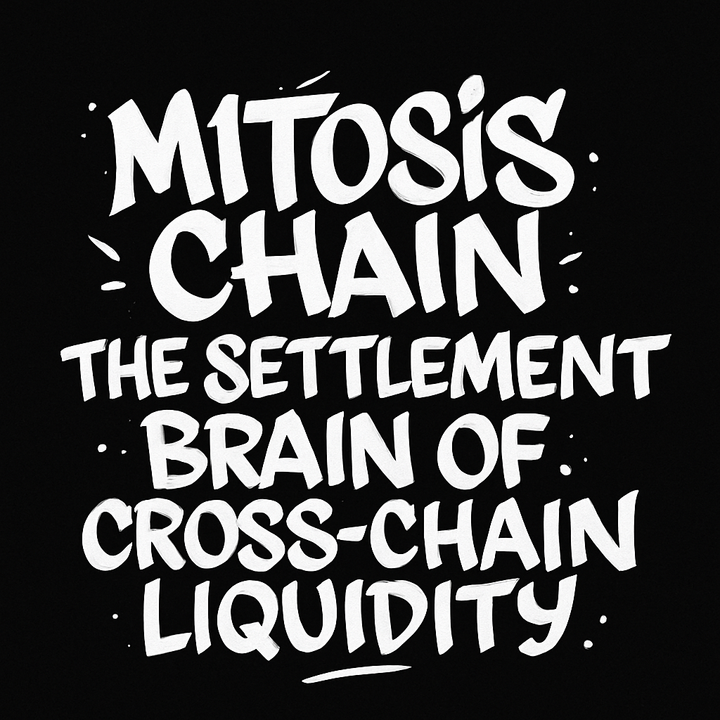The Payy Network: Private, Compliant, and Scalable Blockchain Transactions

Blockchain technology has transformed the digital landscape by enabling decentralized, secure, and intermediary-free transactions. However, its inherent transparency—where every transaction is publicly visible—has hindered adoption in sectors like traditional finance, payments, and real-world asset management, where confidentiality is critical. This creates a blockchain trilemma: balancing privacy, regulatory compliance, and scalability. Historically, achieving all three seemed unattainable, as privacy obscures oversight, transparency sacrifices confidentiality, and scalability strains network performance.
This article builds upon our earlier exploration of Payy’s privacy-first architecture, expanding the discussion to include its compliance mechanisms, performance benchmarks, threat model, and real-world usability enhancements. Readers unfamiliar with foundational concepts like the rationale for using a UTXO model or Payy’s choice of validium over other rollup types can refer to our previous piece, “Digital Cash vs. Digital Ledgers: How the Payy Network's Design Protects Financial Privacy” for a primer.
The Blockchain Trilemma: Privacy, Compliance, and Scalability
Blockchain’s public ledger ensures trust and accountability but exposes transaction details, making it unsuitable for privacy-sensitive applications. Meanwhile, enabling privacy complicates regulatory compliance, as regulators rely on transparency to monitor for illicit activity. Scalability adds further complexity, as networks like Ethereum struggle with congestion, leading to slow transactions and high fees.
The Payy Network addresses this trilemma by rethinking blockchain design. It moves away from the account-based "digital bank statement" model used by Ethereum, adopting a UTXO-based "digital cash" approach that prioritizes privacy. It leverages zero-knowledge (ZK) proofs to ensure compliance without sacrificing confidentiality and uses L2 validium architecture to achieve high throughput, making it a robust solution for real-world financial applications.
Threat Model and Security Assumptions
Payy is designed to resist both passive and active threats to privacy and integrity. Its threat model includes:
- Unlinkability: By using one-time nullifiers and ephemeral notes, it prevents adversaries from correlating transactions.
- Timing analysis mitigation: Batched sequencing and random delays obscure transaction timing.
- DoS and censorship resistance: Prover slashing and slot allocation mitigate spam or delay attacks. The L1 queue enables forced transaction inclusion if sequencers become malicious.
- Ethereum reorg protection: Finality depends on L1 consensus; reorgs affect recent blocks but never invalidate state.
The design assumes a partially honest majority among sequencers and provers, and it encourages decentralization by lowering hardware requirements.
The UTXO Model: Privacy by Design
Unlike Ethereum’s account-based model, which tracks transactions as debits and credits tied to a public address, the Payy Network uses the UTXO model, pioneered by Bitcoin and enhanced in privacy-focused protocols like Zcash. In the UTXO model, value is stored in discrete “notes,” akin to digital banknotes, each with a specific value that can only be spent once.
For example, to pay $5 using a $20 note, a user spends the entire $20 note, creating two new notes: a $5 note for the recipient and a $15 “change” note returned to the sender. These new notes have no public link to the original, breaking the transaction history and preventing onlookers from tracking funds or identifying high-activity users. This is like using fresh cash for every purchase—no one can trace the money back to your wallet.
Payy enhances this privacy with ZK proofs, allowing users to prove they have authority to spend a note without revealing its value, sender, or recipient. A “nullifier,” a unique private identifier, is used to prevent double-spending. Designed so external parties cannot link it to the original note, this ensures privacy is embedded in the network’s core.
Proof of Innocence: Bridging Privacy and Compliance
The Payy Network’s “Proof of Innocence” mechanism resolves the tension between privacy and compliance. Using ZK proofs, users can demonstrate that their transactions meet regulatory requirements—such as not originating from blacklisted addresses—without disclosing sensitive details. This enables compliance in a privacy-preserving environment, making the network suitable for regulated industries.
Payy implements several compliance mechanisms:
- Transaction Lineage: Tracks the origin of funds without revealing individual transaction details. Source lineage monitors entry and exit points, allowing on- and off-ramp providers to reject illicit funds. Full lineage tracks transaction history for a limited time (e.g., one year), balancing privacy and oversight.
- Privacy Pools: Groups users based on compliance risk levels (e.g., KYC-verified or AI-scored pools). Transactions between pools follow predefined rules, ensuring regulatory oversight while preserving privacy.
- Compliance ZK Proofs: Users can prove their funds are not tied to blacklisted addresses. These proofs can be submitted to regulators or off-ramps without compromising privacy.
These tools can be applied at on-ramps, off-ramps, or per transaction, offering flexibility to meet varying regulatory needs.
Use Case Vignettes
DAO Payroll: A global DAO pays 300 contributors using Payy. It batches UTXO transactions into a privacy pool with KYC-scored addresses. Each contributor receives unlinkable payment notes, and a compliance ZK proof ensures funds are clean.
Remittances: A remittance service uses Payy to handle high-volume, cross-border payments. Users in different countries exchange encrypted notes. Compliance proofs verify funds aren’t linked to sanctioned entities.
Asset Settlement: A real-world asset tokenization platform uses Payy to settle transactions privately while proving regulatory compliance, enabling institutional participation.
Comparative Overview: Payy vs. Other Privacy Protocols
| Protocol | Privacy Model | Compliance Layer | Architecture | Target Use Case |
|---|---|---|---|---|
| Payy Network | ZK + UTXO + Validium | Proof of Innocence, Pools | L2 Validium Rollup | Private + Compliant Finance |
| Zcash | ZK-SNARKs (Shielded) | None | Layer 1 | Anonymous Transactions |
| Aztec (V2) | zkRollup + ZK DSL | In development | L2 zkRollup | Private Smart Contracts |
| Tornado Cash | ZK Mixer | None | Ethereum DApp | Transaction Obfuscation |
| Railgun | zkSNARKs | None | L2 Smart Wallet | Private DeFi Transactions |
The Payy Network’s Architecture: Scalable and Secure
Payy operates as an L2 validium rollup, processing transactions off-chain while leveraging Ethereum for settlement. This reduces congestion and costs while maintaining security.
Key Components:
- Sequencers: Use PoS HotStuff consensus to order transactions with ~1s soft finality. Store only recent blocks, lowering resource requirements.
- Provers: Generate ZK proofs and submit them to Ethereum. Slot allocation prevents proof conflicts and ensures decentralization.
- Clients: Create local ZK proofs to validate UTXO transactions, keeping data private.
- Ethereum: Hosts smart contracts for governance, bridges, and slashing.
- Encrypted Transaction Registry (Optional): Stores encrypted data for offline recipients.
Governance and Upgradeability
Payy currently does not define a DAO or token-based governance framework. However, governance considerations will be crucial as the network matures. Future upgrades could delegate control over compliance pool rules, transaction limits, or bridge parameters to a decentralized governance body or smart contract voting system. The Ethereum contracts used for sequencer/prover admission and slashing may be upgradeable through a transparent multisig or DAO process.
Handling Offline Transactions: The Encrypted Transaction Registry
If a recipient is offline, the sender encrypts transaction data with the recipient’s public key and stores it in the registry. When the recipient comes online, their client scans for decryptable transactions.
While convenient, this registry reduces privacy slightly, as encrypted data is publicly stored. Future upgrades may introduce decentralized, sharded registries to mitigate this.
Performance and Scalability
Payy uses Halo2 circuits with HyperPlonk arithmetization and KZG polynomial commitments. Expected proof times:
| Proof Type | Desktop/Mobile | Browser | Optimized Server |
| UTXO Proof | 3s | 9s | - |
| Insert Proof | - | - | <1s |
| Aggregation Proof | - | - | 40s |
| Compliance Proof | 0.3s | 1s | - |
Throughput via Aggregation Layers:
| Aggregation Layer | TPS | Latency |
| 1 | 10 | 10s |
| 2 | 100 | 20s |
| 3 | 1,000 | 30s |
| 4 | 10,000 | 40s |
Future Roadmap and Extensibility
- Sharded Encrypted Registries for secure offline messaging
- Smart Contract Support enabling private DeFi
- Programmable Compliance Pools configurable by jurisdiction
- Cross-rollup Interoperability via bridges or recursive ZKPs
- Developer SDKs and APIs to enable fintech and Web3 builders to integrate seamlessly
- Wallet Compatibility with major tools like MetaMask, WalletConnect, and mobile clients
Key Takeaways
- ✅ Privacy-first UTXO architecture with ZK proofs
- ✅ Compliance via Proof of Innocence and privacy pools
- ✅ Validium design ensures scalable throughput (~10K TPS)
- ✅ Suitable for payments, asset settlement, and payroll
- ✅ Offline-capable with encrypted transaction registry
- ✅ Slashing, staking, and slot allocation ensure decentralization and security
Conclusion
The Payy Network redefines blockchain transactions by delivering privacy, compliance, and scalability. Its UTXO-based design and ZK proofs ensure transactions remain confidential while meeting regulatory standards. As an L2 rollup, it offers high throughput and low costs, making it practical for financial institutions, payment systems, and real-world asset management.
By treating transactions as digital cash rather than a public ledger, Payy bridges the gap between blockchain’s potential and the needs of privacy-sensitive industries. Its Proof of Innocence mechanism marks a turning point, enabling users to maintain confidentiality while satisfying regulators. The Payy Network sets a new standard for programmable, private, and compliant digital finance.
References
- Whitepaper-Payy Network
- What is the blockchain trilemma?-https://www.coinbase.com/en-fr/learn/crypto-glossary/what-is-the-blockchain-trilemma
- UTXO Model: Definition, How It Works, and Goals-https://www.investopedia.com/terms/u/utxo.asp
- What is validium?-https://ethereum.org/en/developers/docs/scaling/validium/
- Halo2 Circuits-https://hackmd.io/@jake/rkWfr36Mi
- KZG polynomial commitments-https://dankradfeist.de/ethereum/2020/06/16/kate-polynomial-commitments.html
Similar Articles
Powering Nexus: How Folding Schemes Scale Verifiable Proofs
Laying the Foundation: 'The One-Time Setup' for Nexus zkVM Architecture
Scaling Verifiable Computation: The Nexus Network, A Verifiable Supercomputer
The Nexus Virtual Machine (NVM): A Finely Tuned Engine for Verifiable Computation
zk‑SNARKs to zk‑STARKs: The Evolution of Zero‑Knowledge in Web3
Succinct SP1 zkVM: Democratizing Zero-Knowledge Proofs for Rust Developers
🧬 How Replacing the EVM with RISC-V Could Accelerate Mitosis’ Programmable Liquidity Vision
The Future of Web3 Security: Verifiability Without Visibility Using zkTLS and FHE
Unpacking Blockchain's Engines: A Comprehensive Look at Virtual Machines
Digital Cash vs. Digital Ledgers: How the Payy Network's Design Protects Financial Privacy



Comments ()